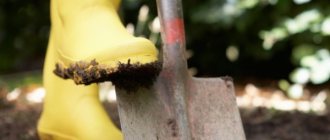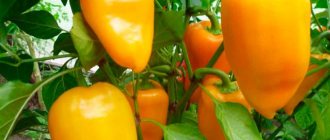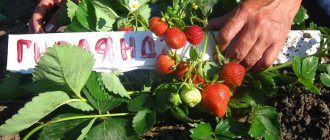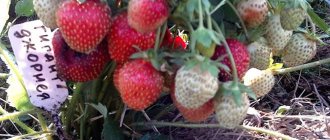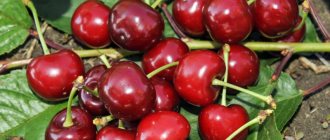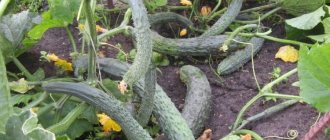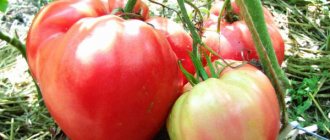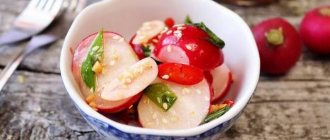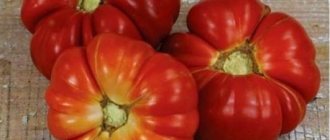The beginning of gooseberry culture in Russia dates back to the 11th century. Its berries are rich in easily digestible sugars and organic acids, contain pectin and vitamins C, B, A, PP. Gooseberries are delicious to eat fresh and can be safely processed into a variety of original preparations - from jams and sauces to wines and jellies. It is also a valuable early honey plant.
Yes, here’s one nuisance - the shoots of this crop are too “spiked”. By the time you reap the harvest, you will be scratched and scratched all over - the same picture occurs when pruning or processing shrubs. Therefore, among many summer residents, gooseberry varieties with weakly thorny shoots are mainly popular. Moreover, among these today you can already choose gooseberries with berries of different sizes, colors and tastes, which are quite unpretentious to growing conditions, productive and resistant to diseases.
We have already told you in detail how to plant and grow such thornless gooseberries on your site, today we will talk about its most successful varieties.
We have tried to compile for you the most popular, productive and sweet varieties of thornless gooseberries - pink, white, red, yellow, green, black - take your pick!
Gooseberry Consul (Senator)
Russian selection variety of medium ripening period.
The variety is self-fertile, winter-hardy, the yield increases gradually with age (from 3 kg from a young plant to 6-7 kg from an adult bush), tolerates short-term drought well, and is highly resistant to diseases. The duration of fruiting is about 40 days.
The bush is vigorous, dense, and quite spreading. The shoots are erect or slightly curved, of small thickness. There are no thorns or there are weak single ones, but in insignificant quantities in the lower part of the shoots.
The leaves are medium-sized, three-lobed, green, slightly shiny, wrinkled, on thin, long, slightly pubescent petioles. The flowers are small, bright, inflorescences are one-, two- or three-flowered.
The berries are medium-sized (3-6 g), one-dimensional, round-oval, red and very dark red in color with clearly visible light veins, with a matte surface without pubescence. The skin is thin but dense, the flesh is tender, aromatic, translucent. The overall taste is sweet and sour, dessert with a hint of kiwi, a universal berry. Transportability is excellent.
Ural thornless gooseberry (Ark)
Russian selection variety of medium ripening period.
The variety is winter-hardy, high-yielding (4-9 kg per bush), demanding on watering, but tolerates short-term drought well, and is resistant to diseases.
The bush is vigorous, slightly spreading, of medium density. Most shoots grow vertically; lateral shoots may deviate slightly to the sides. Thorns are absent or present, but in small quantities, in the lower part of the shoots.
The leaves are medium-sized, three-lobed, dark green, glossy, concave, wrinkled, on small, pubescent petioles. The buds are painted bright crimson. The flowers are medium-sized, pink, and fade over time.
The berries are large (6-9 g), one-dimensional, round-oval, bright green in color with clearly visible light veins, with a matte surface without pubescence. The skin is dense, medium thickness, sour, the flesh is juicy, sweet, and the aroma is pleasant. The berries are easily torn from the branches and are prone to shedding when fully ripe. The general taste is sweet and sour, dessert, universal berries. Transportability in unripe form is excellent.
Reproduction
Gooseberry Pink 2 is not very easy to propagate, but if you want to have several bushes of this beautiful variety, you can try the following methods:
Gooseberry Grushenka
A variety of Russian selection with a medium-late ripening period.
The variety is winter-hardy, medium-yielding (4-6 kg per bush), demanding on soil, tolerates drought well and is overly sensitive to excess moisture. The variety is resistant to powdery mildew, anthracnose and septoria. The variety is early-bearing, but has a short fruiting period.
The bush is medium-sized, semi-spreading, heavily leafy, prone to thickening. The shoots are long, branching, drooping - an adult bush requires garter and regular pruning. There are practically no thorns.
The leaves are medium-sized, five-lobed, green, glossy, slightly wrinkled, on small, hairless petioles. The inflorescences are one-, two- or three-flowered and are borne in large quantities along the shoot.
The berries are medium-sized (3-7 g), one-dimensional, oval-pear-shaped, dark purple (plum) in color, with a matte surface without pubescence. The skin is dense, of medium thickness, the flesh is juicy, sweet and sour, the aroma is pleasant and rich. The berries are not prone to cracking and shedding. The general taste is sweet and sour, dessert, universal berries. Transportability is excellent.
Nuances of growing and care
To successfully cultivate thornless gooseberries and obtain a bountiful harvest, it is necessary to choose the right place, prepare it for planting and follow the agricultural practices of planting and growing.
Selecting a location:
- Sunny or with some shade during the day.
- No drafts.
- Eastern, southern side of the site.
Seat:
- Soil: black soil, sandy loam, loamy. Wetlands and areas with high acidity are not suitable.
- pH level 5.2-6.7.
- In the new place, all weeds are removed, the soil is dug deep and loosened so that the soil is softer, lighter, and more breathable. Sand and peat can be added to clay soils.
It is better to select a seedling in a nursery:
- The seedling can be one, two, or three years old.
- Healthy, without obvious signs of disease, damage by rodents or other pests, rot, or breakage.
- Leaves are rich green.
- The root when cut is white, flexible, elastic.
See also
When and how to prune gooseberries correctly to ensure a good harvestRead
Boarding time:
- Autumn, end of September - first half of October in the middle zone, in the south, southwest, southeast, in the Moscow region.
- Spring, April - first ten days of May: northern regions, the Urals, Siberia.
Stages of planting gooseberries without thorns:
- For a day, place the seedlings in a bucket of water or diluted growth and root formation stimulator.
- Mark the planting pattern on the prepared area. The distance between rows is 1.5-2 m, between bushes 1.3-1.5 m.
- The pit is 35-45 cm deep, diameter 35-50 cm.
- If the soil is heavy and underground water is close, then dig a hole to a depth of 50 cm, lay a layer of expanded clay or broken brick drainage on the bottom, and sprinkle a layer of sand on top.
- If the soil is black soil or loam, then water the hole with 4-6 liters of water before planting the seedling.
- Then, up to 100 g of nitroammophoska is poured into the hole under the bush.
- The seedling is buried no more than 4 cm from the root collar. If planted deeper, the root will grow higher, since gooseberries reproduce vegetatively.
- Sprinkle it with a mixture of soil, ash, and rotted manure.
- Leave a hole around the bush to retain water.
- Water the hole with 5-6 liters of water.
- Mulch the top with rotted manure and pine needles if planting took place in the fall.
Caring for the bushes is simple, watering 10-12 liters per bush once every 2-3 weeks. During the period of berry ripening, irrigation is stopped.
Feeding after planting with fertilizers is carried out after 1.5-2 years. In spring, you can use fertilizers with nitrogen, phosphorus, and potassium. During the flowering period, urea or infusion of weeds. In the fall, mulch the soil around the gooseberries with peat, manure, and ash. In summer and autumn, the soil around is mulched in the form of fertilizer with mowed green manure, which has a positive effect on the growth and fruiting of bushes.
Pruning is carried out in the fall to form new shoots during the growth period in the spring. Cut the skeletal branches into 1-2 buds facing the inside of the bush if the branches droop inside the bush. If the branches are erect, then cut off 1 outer bud.
In the spring, formative pruning is carried out before the active growing season begins; growths and branches that thicken the bush are trimmed with pruning shears. Every 8-10 years you need to carry out anti-aging pruning, cutting off all old shoots.
Thornless gooseberry varieties are almost not attacked by insects and rodent pests and various diseases, but in spring and autumn they require preventive spraying with fungicides and insecticides.
Gooseberry Commander (Vladil)
Russian selection variety with mid-early ripening period.
The variety is winter-hardy, high-yielding (5-7 kg per bush), unpretentious in cultivation, characterized by good self-fertility, resistant to fungal infections, and practically not affected by aphids, moths and sawflies.
The bush is medium-sized, slightly spreading, of medium density. The shoots are thin, upright, mostly thornless (single thorns are thin and sparse).
The leaves are medium-sized, three- and five-lobed, dark green, glossy, slightly wrinkled, on small, slightly pubescent petioles. The flowers are small, bright pink, collected in two- or three-flowered inflorescences.
The berries are medium-sized (4-5 g), one-dimensional, round-oval, first reddish, then burgundy-brown in color with moderately noticeable light veins, with a matte surface without pubescence. The skin is thin, sweet and sour, the flesh is juicy, sweet, bright crimson, the aroma is pleasant. The berries are not prone to cracking and shedding. The general taste is sweet and sour, dessert, universal berries. Transportability of fruits is low.
Agricultural technology
The variety requires high agricultural technology. Planting location: sunny, soil with a loose structure, highly fertile. Without fertilizing and sufficient watering, you cannot get large berries. Be sure to carry out thinning pruning.
Pink 2 is a rather rare variety and is not often found in nurseries. This is due to difficulties during reproduction and high demands on agricultural technology, in particular on soil fertility. This gooseberry is valued for its taste, high immunity, self-fertility and good winter hardiness.
Chelyabinsk gooseberry thornless (slightly thorny)
Russian selection variety with mid-early ripening period.
The variety is self-fertile, winter-hardy, high-yielding (4-8 kg per bush), tolerates short-term drought, is resistant to diseases, and does not tolerate acidified and waterlogged soil.
The bush is medium-sized, compact, dense. The shoots are of medium thickness, slightly curved near the base, pubescent. Thorns are present in small quantities at the bottom of the shoots.
The leaves are medium to large, three-lobed, bright green, glossy, curved, on medium-sized, slightly pubescent petioles. The flowers are medium-sized, lime-colored, collected in two- or three-flowered inflorescences.
The berries are medium and large (3-7 g), one-dimensional, round-oval, dark cherry color, with a matte surface without pubescence, with a waxy coating. The skin is thin, easily separated, the flesh is juicy, sweet, and the aroma is pleasant. The general taste is sweet and sour, dessert, universal berries.
Gooseberry Northern Captain
A variety of Russian selection with a medium-late ripening period.
The variety is partially self-fertile, winter-hardy, high-yielding (yield increases gradually with age (from 2.5 kg from a young plant to 7-9 kg from an adult bush), demanding watering, but tolerates short-term drought well, resistant to diseases (especially powdery mildew) ) and pests.
The bush is vigorous, wide-spreading, dense. The shoots are highly branched, of medium thickness, and grow obliquely. Thorns are absent or present, but sparse and thin, in small quantities in the lower part of the shoots.
The leaves are large, three-lobed, dark green, glossy, soft, slightly wrinkled, on small, slightly pubescent petioles. The flowers are large, pink-greenish, the inflorescences are two- or three-flowered.
The berries are medium-sized (4-6 g), one-dimensional, round-oval in shape with an expanded base, dark red and dark purple in color, with a matte surface without pubescence, with a waxy coating. The skin is of moderate density, the flesh is juicy, sweet and sour, with a pronounced aroma. The overall taste is sweet and sour, a versatile berry. Transportability and keeping quality are excellent.
